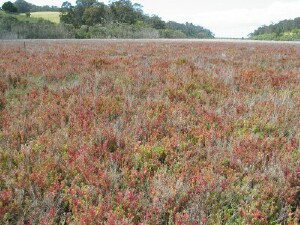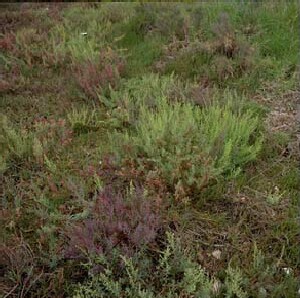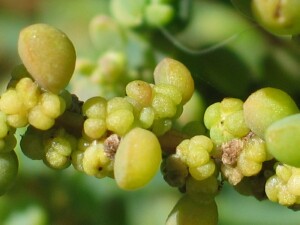Back | Salinity Indicator Plants Home | Common name home | Scientific name home | Photo Gallery | Glossary
| Scientific Name: | Suaeda australis | 
Austral Seablite - plant
Photo: R Clark |
Other Common Name:
|
Redweed
|
Status: | Native to all Australian states. |
Plant Description:
|
Straggly to compact, perennial shrub which can grow up to 1 m tall but is often only about 20 cm tall. Small narrow succulent leaves 1-4 cm long, on long upright stems and branches. Leaves are light green or purplish-red. Short, slender, leafy spikes or branches bearing clusters of small flowers and later the round fruit. Flowers in summer and autumn. Succulent fruiting body 1.5-2 mm diameter with 5 lobes covering the seed.
|
Habitat:
|
Usually saline clay soils. Found in saline situations. Along drainage areas and on the edge of temporary lakes, once the water level has dropped. Common in irrigation-induced saline areas. A widespread undershrub of salt marshes.
|
Comments:
|
Seldom grazed. A very similar species to Austral seablite and also growing in saline environments is the Russian, Berry Seablite (Suaeda baccifera). An annual or short-lived perennial, Berry Seablite tends to form less dense a shrub as Austral Seablite, has leaves to 2 cm long only and unlike Austral Seablite which has flowers confined to the upper parts of the plant, has flower-heads at least as long as the plant itself.
|
Austral Seablite Photos








